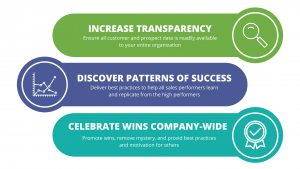
These days, software vendors are continuously looking for more ways to provide a value-added solution to their clients in order to adapt to changing behaviors and preferences. Modern consumers are looking for convenience and speed when it comes to their experiences and will gravitate towards businesses that will give them that. Businesses, in turn, will look to vendors that can help them provide those experiences. Disconnected silos may have been the norm but now it’s about functionality and unity. The more value that businesses can get from one vendor, the better. This is a driving factor to why more and more software vendors are integrating services such as payments into their software.
Payments in software
Companies are assimilating payments into their software so that their business functions – whether it’s clinic management, inventory management, etc. – and payments are seamlessly integrated to provide an intuitive and fluid user experience for clients.
Benefits to you
If you’re a software vendor, a payment integration can be extremely beneficial for you. Partnering with a processor to offer payments within your software gives your clients a value-added solution. Each payment provider is different but typically, you will also reap benefits such as market penetration and increased revenue.
Benefits to your clients
The more your can offer to your clients, the better your customer acquisition and retention rates are. One of the biggest benefits to a payment integration is the ability to offer your clients an omnichannel solution that streamlines their operations and keeps payment data in one convenient place. They’ll only need one vendor for their business operations and payment processing needs, and they’ll be able to offer their customers multiple payment channels. Below are some more benefits that your clients will see with an integrated payment solution:
- Increased productivity: With all transaction data kept digitally, monitoring, tracking, and reporting become a cinch. Some integrated payment solutions even allow you to export this information directly into your tax software.
- Greater efficiency: Secure customer storage and recurring billing plans help reduce human errors like double billing or calculation mistakes.
- Better forecasting: With payment data all in one place, reporting becomes automatic and simplified, and you gain greater visibility, identify trends easily, and forecast future revenue.
- Reduce PCI scope: Sensitive customer information is always encrypted, reducing your clients’ responsibility for PCI compliance.
- Preferred rates: When you partner with a payment provider for your integration, your clients often get preferred rates through the partnership.
How to integrate
Now you’ve decided to offer payments, the question becomes how to go about building payments into your software? You have two options: having your developer build the payment functionality internally from scratch or having them integrate with a payment API. Over the last few years, many developers have been taking advantage of the latter and using third-party APIs.
APIs: a brief intro
The easiest way is to build payments into your software is to partner with a payment processor that offers an integration via an API (Application Programming Interface). An API “is a set of routines, protocols, and tools for building software applications” that facilitate communication between applications (service products, software programs, apps, etc.). Infinite interactions are made possible by APIs across multiple industries, including digital payments. Since Salesforce and eBay introduced their APIs back in 2000, there has been a massive boom in APIs. There are currently over 16,590 APIs on ProgrammableWeb – and that’s not even counting the private ones. The growth of the API economy isn’t due to any one industry; from Fintech to social networks, APIs are being used across multiple industries.
Why integrate?
Simply put, it’s easier for developers. Developers realized that they don’t need to build functionalities from scratch because many other companies have already done it for them, freeing them up to focus on their core product. So developers are steadily relying on third-party APIs from the larger platforms like Salesforce, Amazon and, more recently, specialized developers like Payfirma. Third-party APIs are often more flexible and have comprehensive capabilities.
How to choose the right payment partner?
Not APIs are created equal. It’s important to have an API that can not only do what you need it to do but is easy for your developers to work with. An API that has a simplified, standard code structure and error messaging, robust integration capabilities, and sandbox account for your developers makes for an easy integration.
Beyond API functionality, consider these factors when choosing a payment integrations partner:
- Revenue share: A revenue share program gives you a percentage of the total processing volume of your clients.
- Onboarding process: Look for a partner that can provide a speedy and seamless onboarding to make it as easy as possible for your clients to get started processing payments within your software.
- Product scope: Make sure the capabilities offered by the API aligns with the business needs of your clients.
- Customer service: Look for a processor that provides 24/7 customer support so you, your developers, and your customers get help when you need it.
- Marketing support: Check whether marketing support and resources such as initiatives and campaigns that help increase market penetration and conversions are provided.
- PCI compliance: Your clients have enough on their plates without needing to worry about PCI compliance. Look for a processor that ensures transactions are encrypted and PCI-compliant.
Regardless of your software solution, a payment integration can have boundless opportunities for both you and your clients.
Business & Finance Articles on Business 2 Community(90)






